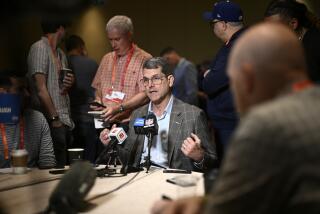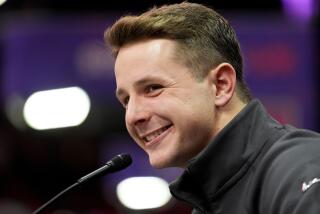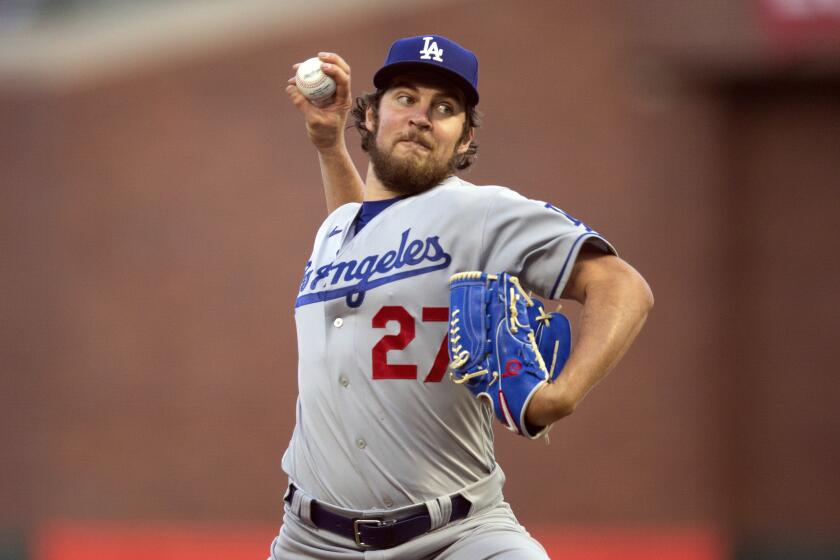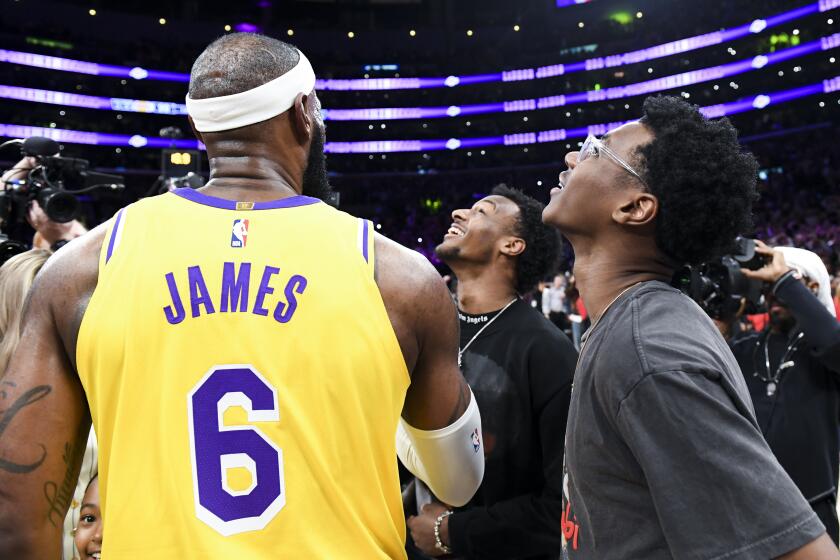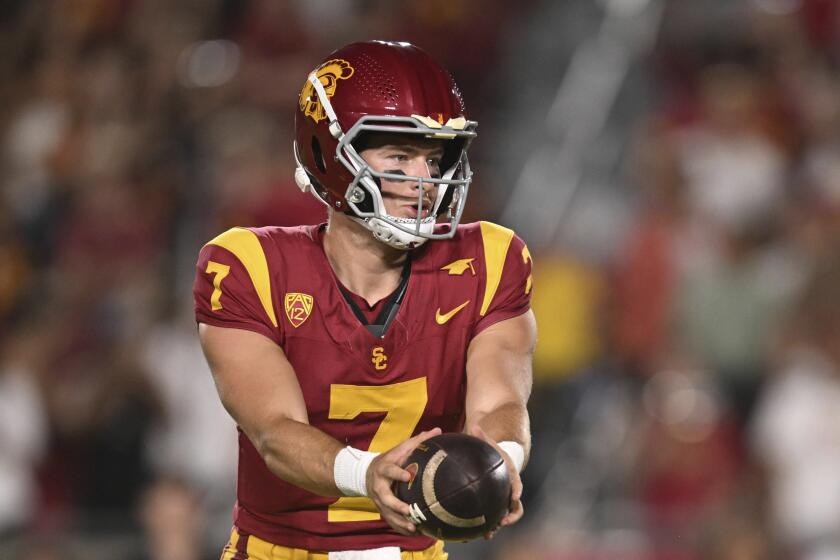As soon as NFL draft ends, it’s a free-for-all in pursuit of undrafted players who could make a difference
Imagine if in one draft your favorite NFL team selected five longtime players, three of whom made multiple Pro Bowls, and one a future Hall of Famer.
That would be quite a haul.
Now, imagine that all of those players were undrafted rookies signed after the last name was called. That was the case with the Chargers in 2003, when the team brought to San Diego a rookie free-agent class that included tight end Antonio Gates — who will be Canton-bound — guard Kris Dielman (four Pro Bowls), special-teamer Kassim Osgood (three Pro Bowls), and a pair of eventual starters in defensive tackle Jacques Cesaire and linebacker Stephen Cooper.
It’s an enduring reminder as the seven rounds of this year’s draft unfold, it ain’t over when it’s over.
Not everyone who winds up contributing on an NFL roster has his name scribbled on a draft card, and, like the roiling crowd that follows in the immediate wake of a big parade, the real madness starts after “Mr. Irrelevant,” the nickname coined for the final pick of the draft.
Truly, it’s a Saturday night fever.
“It’s kind of like the wild, wild West,” said John Spanos, Chargers president of football operations. “Because as soon as that last pick is in, it’s kind of a free-for-all.”
Hall of Fame quarterbacks Warren Moon and Kurt Warner went undrafted. So did quarterback Tony Romo, receiver Wes Welker, running back Priest Holmes, and linebacker James Harrison.
They and others are the unpicked patron saints — Drew Pearson, John Randle, Jeff Saturday — and a big reason why teams furiously work the phones to sign those players who slipped through the cracks.
“It’s like a scene from ‘Boiler Room’ or ‘The Wolf of Wall Street,’” said Tony Khan, senior vice president of football technology and analytics for the Jacksonville Jaguars. “Everybody’s running around on their phones trying to make things happen. I love that process of trying to sell the players on why you’re the best fit for them.”
Instantly, the paradigm shifts from the teams calling the shots and picking the players, to the players having the power to decide where they want to go. It’s college recruiting all over again.
“The [undrafted] players are akin to girls who haven’t been invited to the dance,” agent Leigh Steinberg said. “In a microsecond, they morph into the belles of the ball.”
In that sense, it’s often better for a player to go undrafted and pick his landing spot, rather than to be selected in the seventh round and face long odds of actually making a roster.
For the teams, it’s an all-hands-on-deck situation, with the general managers, the head coaches, the position coaches, and sometimes even the owners calling the agents and players in hopes of wooing talent.
“It’s a scramble,” Spanos said. “We have our lists. A lot of our philosophy is making sure we’re well prepared, and how do we rank these guys who are left? Then we’re really hitting the phones and trying to come to an agreement on contract terms. But at the same time, you have a bunch of other teams trying to do the same thing.”
There are lots of factors in play for the undrafted prospects. They’re looking for a place where there’s opportunity, such as a lack of depth at their particular position, but they’re also in search of the best signing bonus. The clubs have a limited amount of money to spend on those bonuses for rookie free agents — this year it’s $103,856 per team — and that’s divvied up among the class.

“There are lots of different philosophies,” Spanos said. “You can give one guy $20,000 or $30,000, or you can divide it up among 15 players and give them each $7,000. Some of that depends on who’s there and what you wind up filling in the draft.”
Beyond the offseason 90-man roster limit, there are no limitations on the number of free agents a team can sign.
A year ago, Steinberg was on a yacht rented by the father of USC tackle Chad Wheeler for the purposes of a draft party. But Wheeler wasn’t selected. By the sixth round, teams already were starting to reach out to Steinberg, and by the seventh specific offers were starting to come in.
The key, Steinberg said, is having the relationships with coaches and executives so the agent can figure which teams are truly willing to give the free agent a chance to compete. Wheeler wound up signing with the New York Giants and made the team.
Steinberg also represented Central Michigan quarterback Cooper Rush, who likewise went undrafted last year. The Dallas Cowboys called, and Steinberg had an inside edge — he had represented both quarterbacks coach Wade Wilson and Cowboys coach Jason Garrett back in their playing days.
Rush went from being crushed … to his current role as Dak Prescott’s backup.
Follow Sam Farmer on Twitter @LATimesfarmer
More to Read
Get our high school sports newsletter
Prep Rally is devoted to the SoCal high school sports experience, bringing you scores, stories and a behind-the-scenes look at what makes prep sports so popular.
You may occasionally receive promotional content from the Los Angeles Times.

